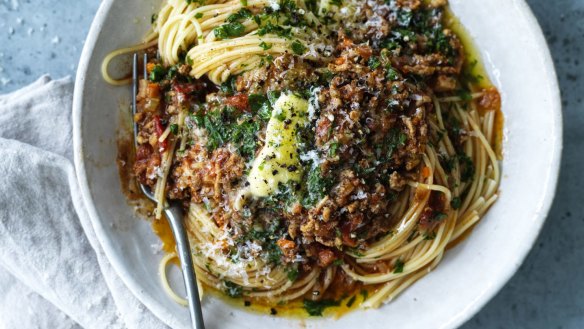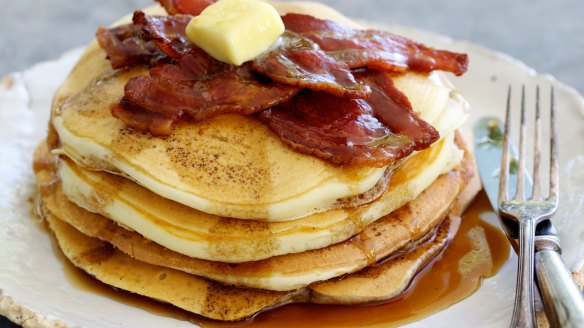Adam Liaw's six step process to help plan your meals, waste less food and cook more

QUARANTINE COOKING
Social distancing. Lockdown. Self-isolation. Whatever you want to call it, we all need to do it. Now. If you don't think that applies to you, think again.
This is new territory, so working out what we should be doing can be confusing. The good news is, we're not heading into underground bunkers for months on end.
You can still go to the shops and buy food. The current recommendation is to limit that to once a week if you can. We have fridges, electricity and gas. You can order delivery and takeaway. Struggling restaurants with now-closed dining rooms will thank you. There's no need to panic-buy. We're not running out of food.
We're not looking at months eating out of cans. We still have access to fresh food. We should be planning how to eat for a week between shopping trips, not a month.
The rush on mince, tinned tomatoes and dried pasta seems to indicate a lot of people are planning to make big batches of spaghetti bolognese. I love a good spag bol, but this isn't meal prep. Meal prep is when you prepare a week's meals in advance so that you can save time on cooking when you get home after work. You've actually got more time now, not less.
Things are difficult everywhere, but food doesn't need to be one of them.
If you've ever complained that you'd cook more, if only you had the time, here's how to get started.
Organise
Your first step should be to organise your fridge, freezer and pantry. You don't need to throw a bunch of things out, but it's good to take stock. It could be just a mental note of what you have on hand, or you can write a physical list if you think it'll help. When I did this I found dried noodles, freezer surprise packages and half-used jars of whatever that I didn't even know I had. Now I'm using them in my everyday cooking bit by bit.
Make space
If you've got a bar fridge full of non-perishable drinks, maybe move those out to make space for more fresh produce. If you've got four different tubs of ice-cream in the freezer maybe consolidate that down to one – if a few bowls get eaten in the process, you're doing it for a good cause. (Try my biscuit crumble recipe.)
Reduce waste
Rather than stockpiling, the best way to make what you have go further is to throw out less. On average we Australians waste about a third of our food so anything you can claw back from that is a benefit to you. If you have some odds and ends of vegetables, chop them up and throw them into that quarantine bolognese. Turn bones and offcuts into stock. Before anything goes in the bin, think to yourself "how can I use this?"

Ignore 'use-by' and 'best before' dates
This is good advice in ordinary times, but these days it is more relevant than ever. These dates are not an indication of whether a product is safe to eat. Trust your nose, and in particular look for two distinct smells:
The first is putrefaction – the sour, disgusting and quite unmistakeable smell of something that has gone off. Avoid.
The second is rancidity. Rancid, oxidised oils have a waxy smell and while they might not make you sick immediately, they can be unpleasant tasting.
If you don't identify either of these smells, your food is likely to be safe to cook. I'm not just talking a few days out of date either. Many jarred goods like jams or curry pastes with preservatives can be used months (or even years) after their best before dates have passed.
Log on
If you've got an ingredient you don't know what to do with, just look it up. The Good Food website is full of great ideas and recipes. We're all still online and if you've been squirrelling a few recipes away to try out someday, that day has arrived.
Plan your meals
Use perishable ingredients such as leafy greens earlier in the week, and the more robust ones, like carrots, later. Be flexible. If you don't have an ingredient, use your intuition rather than running out to the shops.
My rule of thumb is that most ingredients can just be simply left out of a recipe without any problems, but if that ingredient is sweet, salty or sour look for a substitution that replaces that taste. If you don't have sugar, use honey. If you run out of soy sauce, use a bit of salt. No lemon juice? Try vinegar instead.
Things are difficult everywhere, but food doesn't need to be one of them.
In the kitchen equation that multiplies time, know-how and money into good food, all of a sudden time is in surplus, which means that you can now eat better and more cheaply than ever before.
Appears in these collections
- More:
- Food
